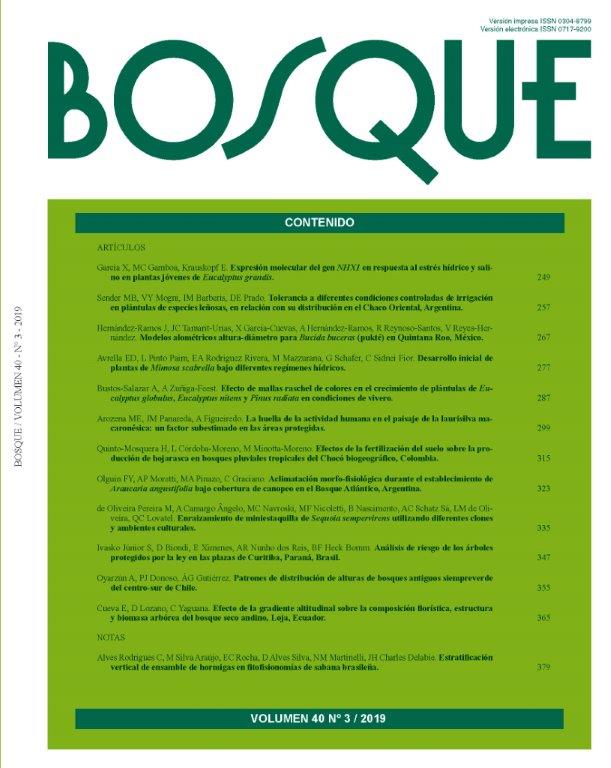Morpho-physiological acclimation to canopy coverage of Araucaria angustifolia during the establishment in the Atlantic Forest, Argentina
Conteúdo do artigo principal
Resumo
Araucaria angustifolia is an ecologically and commercially important species of the Atlantic Forest. However, its ability to regenerate continuously under the shade of the canopy in the rainforest is uncertain. The aims were: to evaluate the morpho-physiological responses of araucaria to different intensities of canopy coverage to know its shade acclimation capacity; and to evaluate survival and growth under different shade intensities in gaps. First, seedlings were grown in pots at full sun or under canopy shade and morpho-physiological traits were measured after 6 and 12 months. Survival was 100 % under full sun and 40 % under shade. One year after planting, the ability to use high-intensity light was similar in plants under both conditions, although shade plants did not grow and showed little capacity to acclimate to shade. Plants under full sun duplicated their size in six months and had higher capacity to deliver water to the leaves. However, shade plants had higher specific hydraulic conductance. After that, in a field experiment, seedlings were planted in six forest-gaps to record survival and growth for 30 months. Survival was high in all positions within the gaps. In the center of the gaps, where incident radiation was higher, growth was higher. We conclude that araucaria has low ability to acclimate to low radiation, nevertheless, it can survive at least 30 months under the canopy. Consequently, araucaria should not be planted below dense canopy shade. The microenvironment in the center of 195-293 m2 gaps is proper for araucaria growth.

